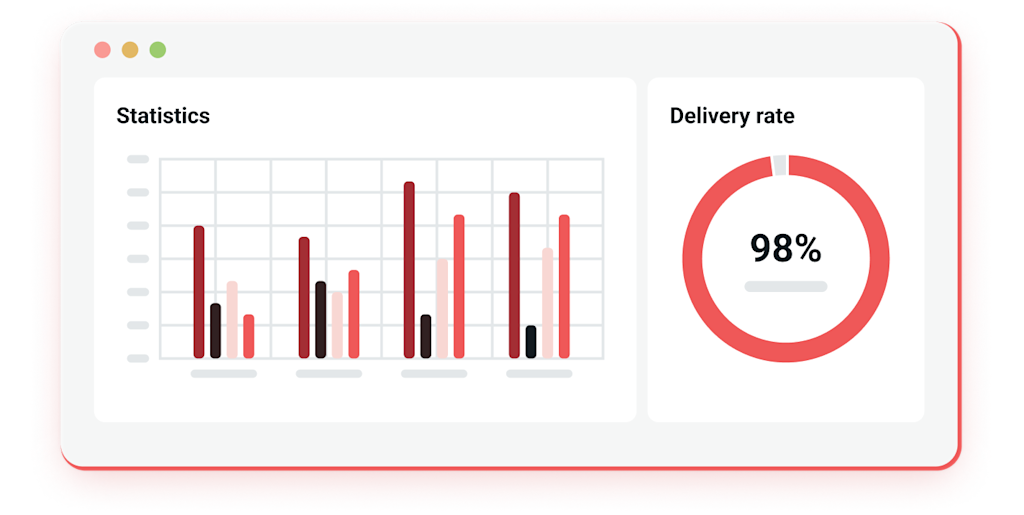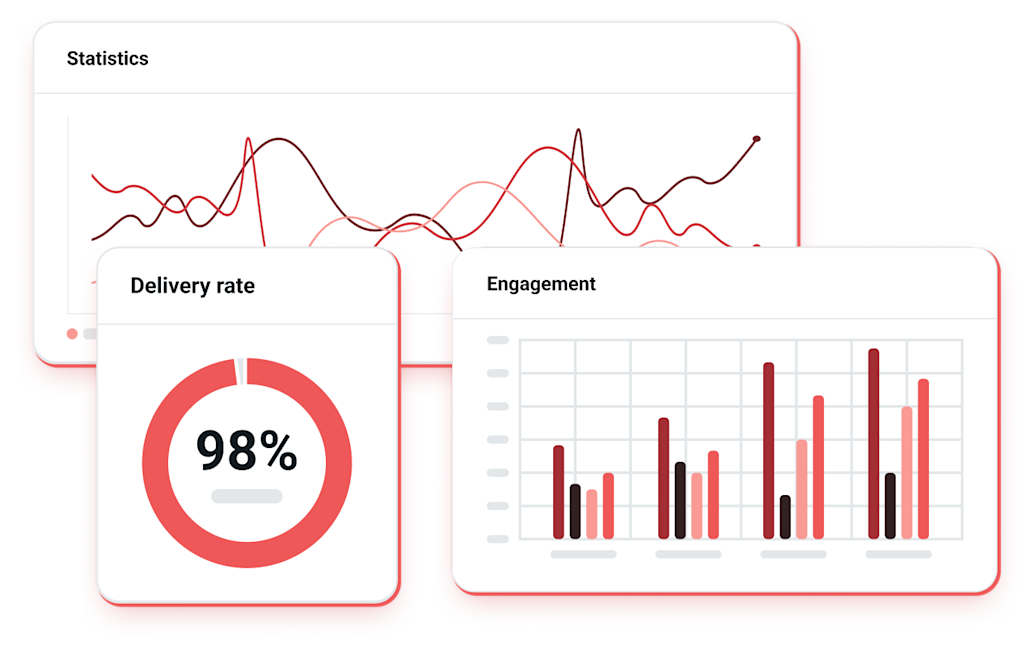Increase email deliverability by improving your reputation
Email is one of the most important channels for connecting with people online today. Whether it’s email marketing to current customers, internal teams collaborating together, salespeople reaching out to prospects, your email reputation should be a priority.
“Email reputation” or sender reputation is an important factor mailbox providers (mail servers) such as Google’s Gmail, Microsoft Outlook, or Yahoo Mail, use to score the credibility of your organization as an email sender. Each mailbox provider has its own complex algorithm that tracks and updates your sender reputation, which is based on both your domain and your IP address (IP). Email reputation services exist to help you track and optimize your email reputation to optimize email deliverability.


Using email logs to track history
Want real-time updates on email deliverability? Worried that you may have been hit a spam trap? The best email reputation services log and index every action taken on your message, allowing you to understand exactly what happened. Logs can be retained for up to 30 days, giving you the ability to troubleshoot and trend the details of your email send.
Optimize your IP reputation
Depending on your email programs and how many emails your business sends per day, your IP strategy could vary greatly. Reputation services can help you manage and optimize your IP reputation appropriately. Sending more than 50,000 emails per day typically means you should use a dedicated IP address, while sending less than 5,000 per day might mean a shared IP solution (shared with other businesses) would better protect your IP reputation.


Optimize your domain reputation
Your business could have an email program for corporate emails, marketing emails, sales emails, and customer emails. One way to improve your sender score and protect your domain reputation and email reputation is to use a different top-level domain and email address for each email program. By using reputation services, an administrator can easily create and manage multiple domains or subdomains very easily, and use each one for a different email program.

How is your email reputation determined?
Building a positive email reputation is not an exact science. And like most things, it doesn’t happen overnight. When we talk about reputation, we are referring to the combination of two things: IP reputation and domain reputation. While there is some overlap between the two concepts, there are some key distinctions.
First, IP addresses identify the computer or mail server that you are using to send email and access the internet. IP addresses are unique and immediately identify the user or group of users. A domain name is part of the email address from which you send messages to other users.
Why a high sender score matters
When IPs and domains are maintained and send only legitimate email, it should result in a high sender score. Unfortunately, that isn’t always the case. If either one is compromised by sending out unwanted emails or viruses, users may file spam complaints and block your messages. If the issue progresses, you may end up on an IP blocklist, which will threaten your email deliverability.
Your online reputation is analogous to a credit score: a high sender score gives you access to existing and potential customers, while IP addresses and domains that have lodged repeated spam complaints are likely to end up in the spam folder, or worse, on blocklists.
And like a credit score, a strong online reputation and a strong sender score takes a while to build. Just as you wouldn’t go out and open dozens of credit card accounts in one day, you don’t want to start by sending extreme amounts of email on day 1.


How domain reputation works
How Domain Reputation Works Your domain reputation is affected by factors like web domain age, your domain category or industry (e.g. entertainment, lifestyle, e-commerce, etc.), and links and connections to other domains and websites. It’s used by mailbox providers like Gmail to determine whether or not your message should be delivered.
When you use an email server or email service provider, you add DNS records for your domain so every email you send comes from your email address.
The recipient’s internet service provider, email program, or email client check your sender reputation before accepting delivery.
Your domain’s reputation influences whether your emails land in spam folders or inboxes.
Key factors for email deliverability
Your domain reputation is just one part of the equation. When it comes to email delivery, other factors also come into play:
Email content
Web reputation scores by third-party services
IP reputations
Percentage of malicious code, threat activity, or spyware-containing emails reported from your domain name
Spam complaints (any amount is enough to damage your reputation, so be very vigilant and considerate of your reader’s time!)


From data points to action plans
Building a solid reputation score doesn’t happen overnight, which is all the more reason to check your sender score reports periodically and correct course when you notice any dips. If you’re using an email service provider to handle your email messages, you’re already a step ahead: Mailgun’s Managed Services, for instance, will proactively monitor your web reputation and offer concrete tactics to protect or improve your good reputation. Sometimes that’s a one-and-done solution, like adjusting the send infrastructure. And sometimes it’s an ongoing fix, like tweaking your email campaigns’ subject lines and maintaining your email list to avoid common spam traps. Those small changes can make a big impact.
OTHER FEATURES
Explore beyond email reputation
Mailgun has a variety of features for companies in need of email reputation services.



